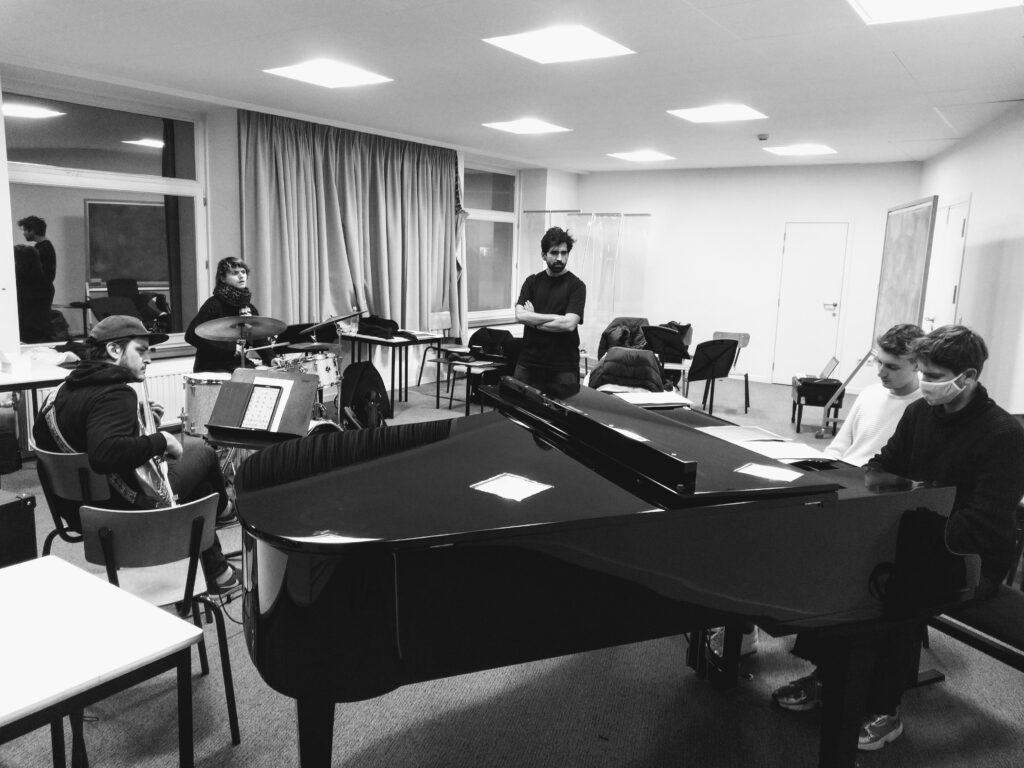
In our second meeting at the Royal Conservatory of Brussels, we focused mainly about rhythm. Drummer Luis Mora Matus directed a series of class activities about the use of subdivisions and additive rhythms, using examples drawn from Prog Metal music (CB Murdoc, Meshuggah). The students played with subdivisions used to create “measured rallentandi”, with superposition of additive rhythms and with irregular meters derived by additive rhythms.
In the second part we related some of the experiences that just happened in class to the spectral approach. I invited the students to provide a list of musical parameters or categories, filling up the blackboard with a “menu” of variables that can be used for music making. This is sometimes done for coaching musicians to get better at free-form improvisation (I borrowed this model from what Stefano Battaglia used to teach at the Siena Jazz workshops).
If an improviser already has a similar framework in mind, then the spectral approach can lead to a further development where the musician intentionally erases the distance between certain categories, situating the foundation of what is played at a threshold between, say, timber and harmony, musical tempo and rhythmic subdivisions, pitch and noise, etcetera.
It should be clear that each of these treatments that allows a liminal territory to be discovered in the space between musical categories requires the application of a different method, of a different workflow. A big question underlying my research is whether it is possible to think of a methodological approach that works as a general framework for the creation of such liminal territories.